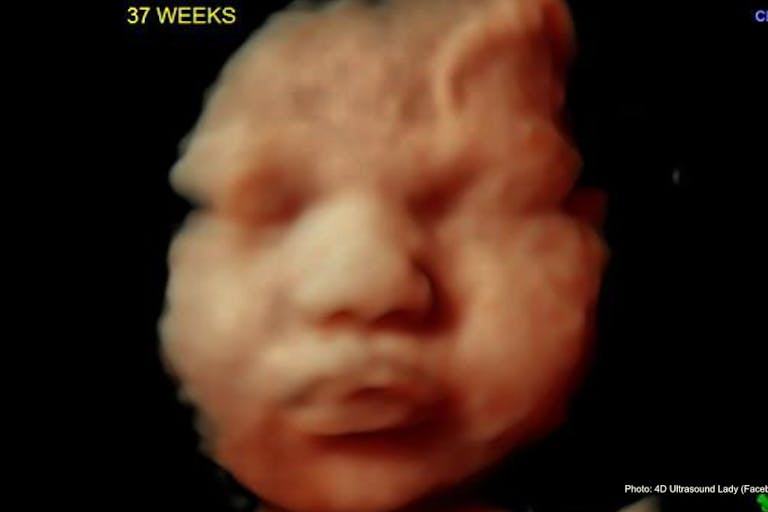
Prosecutors drop charges against Polish doctor who aborted baby in ninth month
Nancy Flanders
·
Woman arrested for flushing stillborn baby down toilet sues hospital, medical staff, and police
Brittany Watts was arrested in 2023 and charged with abuse of a corpse following a stillbirth in her Ohio home, and her subsequent attempt to flush the second-trimester baby’s body down the toilet. Now, Watts has filed a lawsuit against the hospital, the City, two nurses, the OB/GYN overseeing her care, and multiple police officers.
All charges were dropped against Watts in January 2024 when a grand jury refused to indict her, and she is now suing for damages — including mental and emotional distress, alleging that the police and hospital staff conspired against her. While the lawsuit provides more details to the story, it simultaneously presents more questions as well.
The lawsuit accuses the defendants of false arrest, prosecution without probable cause, unconstitutional interrogation, due process violation, conspiracy, Emergency Medical Treatment and Labor Act (EMTALA) violation, malicious prosecution, intentional and negligent infliction of emotional distress, medical negligence, unauthorized disclosure of medical information, and indemnification.
First hospital visit: Placental abruption diagnosis
The lawsuit claims that on September 19, 2023, Watts was 21 weeks pregnant, though she believed she was only a few weeks along. She went to St. Joseph Warren Hospital in Youngstown, Ohio, after she began experiencing pain and bleeding. While at the hospital, she was diagnosed with placental abruption, which, according to the Mayo Clinic, occurs when the placenta separates from the inner wall of the uterus before birth, potentially depriving the baby of oxygen and nutrients and causing heavy bleeding in the mother. In some cases, it is necessary to carry out an emergency C-section, even if the baby is too young to survive.
The Mayo Clinic states that if the abruption “seems mild, your baby’s heart rate is normal and it’s too early for the baby to be born, you might be hospitalized for close monitoring.” If the bleeding stops, the mother might be sent home to rest. Doctors can also give medications to help the baby’s lungs develop and protect the baby’s brain in case preterm delivery does occur. If the baby is 34 weeks or older, an immediate C-section is the standard of care, according to the Mayo Clinic.
The Cleveland Clinic also states that a C-section would be necessary if the abruption is severe, even when the baby is preterm.
“Generally, the severity of the abruption and gestational age of the fetus are the two most important factors in determining treatment,” according to Cleveland Clinic. It notes, “A severe abruption is usually a medical emergency because both the fetus and birthing parent are at risk for life-threatening complications.”
Though doctors told Watts of her diagnosis and the dangers associated with placental abruption, the lawsuit alleges that she spent eight hours at the hospital with “no meaningful treatment or guidance,” adding, “Devastated and scared, she returned home.”
The lawsuit fails to specify whether Watts was discharged from the hospital or if she left against medical advice.
Second hospital visit: Infection sets in
The lawsuit further claims that Watts returned to the hospital the following morning of September 20, in worse condition. Her water had broken (preterm premature rupture of membranes/PPROM), her cervix was dilated, and she had an infection.
“Her pregnancy was doomed, her doctor told her; and until the fetus was removed, Ms. Watts was at risk of hemorrhaging, sepsis, and death,” says the lawsuit. “Time was of the essence.”
Doctors reportedly said that her baby “was non-viable and would either die in utero or shortly after delivery.” While children born as young as 21 weeks have survived, St. Joseph Warren Hospital does not have a NICU equipped to care for a baby born at 21 weeks. There are five hospitals in Ohio, however, that do treat extremely premature babies, and Watts could have been transferred to one of those hospitals if her child was still alive.
Based on the information provided by the Cleveland Clinic, with all of the complications Watts was experiencing, delivery was the best option at that point.
The lawsuit states, “The standard of care for a person in Ms. Watts’ condition was to induce labor or to perform a dilation and evacuation (“D&E”) procedure, depending on the patient’s preference. Either approach would protect the pregnant woman’s health and life, with the D&E allowing for a quicker resolution without the need for labor and delivery.”
It is because of this that the lawsuit further states that the hospital violated EMTALA, which the lawsuit states “requires emergency departments to provide stabilizing treatment to pregnant individuals in labor, pregnant individuals who have emergency conditions unrelated to labor, and individuals who need emergency treatment or manage pregnancy loss. For some pregnant individuals experiencing a medical emergency, including prolonged miscarriages where the pregnancy is nonviable but fetal cardiac activity remains, the necessary stabilizing treatment is terminating the pregnancy in a medical setting, where healthcare providers can guard against the risks of infection, hemorrhage, and stroke (among others).”
This has wrongly been construed to mean induced abortion — the act of directly and intentionally killing the preborn child — is a standard of care for pregnancy emergencies and is equal to “terminating the pregnancy.” These are both false assumptions.
Supreme Court Justice Amy Coney Barrett wrote in the court’s guidance regarding two lawsuits concerning abortion and EMTALA, “The United States also clarified that if pregnancy seriously jeopardizes the woman’s health postviability, EMTALA requires delivery, not abortion. Brief for United States 10; Tr. of Oral Arg. 75. And it emphasized that EMTALA requires abortion only in an ’emergency acute medical situation,’ where a woman’s health is in jeopardy if she does not receive an abortion ‘then and there.’ Tr. of Oral Arg. 79–80. These two temporal points also narrow the scope of EMTALA’s potential conflict with Idaho’s Act.”
Justice Samuel Alito also wrote in this dissent (emphasis added), “… the right to refuse medical treatment without consent does not entail the right to demand treatment that is prohibited by law. Cancer patients have the right to refuse treatment that their doctors recommend, but they do not have a right to obtain whatever treatment they want, such as the administration of a drug that cannot legally be used in this country.
“Likewise here, a woman’s right to withhold consent to treatment related to her pregnancy does not mean that she can demand an abortion. For these reasons, the text of EMTALA conclusively shows that it does not require hospitals to perform abortions.”
A D&E procedure on a baby who has not died naturally in the womb involves the dismemberment of that living child through the use of a Sopher clamp to grasp her arms and legs and tear them off. It is not medically necessary to end a pregnancy by dismembering a living preborn child who is capable of feeling pain.
Article continues below
Dear Reader,
In 2026, Live Action is heading straight where the battle is fiercest: college campuses.
We have a bold initiative to establish 100 Live Action campus chapters within the next year, and your partnership will make it a success!
Your support today will help train and equip young leaders, bring Live Action’s educational content into academic environments, host on-campus events and debates, and empower students to challenge the pro-abortion status quo with truth and compassion.
Invest in pro-life grassroots outreach and cultural formation with your DOUBLED year-end gift!

If a pregnancy must end because of a medical emergency — as was the tragic case with Watts — the pregnancy can be ended without intentionally ending the child’s life. There is a clear difference between a person dying naturally (a child that is too young to survive) or a person being actively killed (by a D&E dismemberment abortion).
Under EMTALA, the hospital was required to provide Watts with stabilizing care or transfer her. EMTALA also states that “under limited circumstances, a medically beneficial ‘transfer’ to another facility” is required. The lawsuit claims that the “standard of care also requires that hospitals not offering D&E procedures inform patients of their options for obtaining the procedure elsewhere. Defendant KHAVARI, Ms. Watts’s doctor, is an obstetrician-gynecologist who would have been well aware of this standard.”
“Yet,” continues the lawsuit, “no doctor, including Defendant KHAVARI, offered Ms. Watts a D&E, despite Ms. Watts indicating that such a treatment option would be preferable. Nor did they inform her that she could obtain one at another facility.”
But how would Watts know to say that an abortion was a ‘preferable’ treatment if she was not told that an abortion was a ‘treatment option’?
Interestingly, an affidavit from Dr. Joy Cooper further alleges that the hospital “failed to provide proper medical treatment,” but Cooper also noted, “As a practicing obstetrician-gynecologist, I am familiar with the standard of care that obstetricians and gynecologists must provide to patients, including the applicable standard of care pertaining to the allegations contained in this Complaint. The relevant standard of care does not differ by state or hospital setting.”
And that standard of care is not induced abortion to intentionally and directly kill a preborn human being, according to medical websites and the American Association of Pro-Life OBGYNs, which said that in cases of placental abruption, “Previable induction of labor is justified in cases of… massive placental abruption…”
The lawsuit continues, “Doctors, however, did conclude that labor should be induced immediately and that they should not wait until Ms. Watts was “on death’s door” before providing treatments. Doctors noted that waiting to induce put Ms. Watts at risk of hemorrhage, sepsis, and death.”
Watts agreed to the induction, but, the lawsuit claims, the medical staff “dragged their feet… allowing Ms. Watts to languish in the hospital—effectively untreated—for 10 more hours. Ms. Watts, confused and even more devastated and scared than on the previous day, again returned home untreated.”
Patients are allowed to refuse care and leave hospitals against the advice of doctors, but typically they must sign a document stating that they understand the risks they are taking. It remains unclear if, for a second time, Watts was discharged, or left of her own free will having signed documentation stating that she was leaving against medical advice. It is also unclear what, if any, treatments were provided to Watts in the 10 hours she was reportedly at the hospital.
The lawsuit goes on to state that none of the doctors told Watts how to “manage her impending miscarriage at home. In particular, Ms. Watts was never told what her fetal remains would look like or how to dispose of them.” Yet, it is unclear if the doctors even knew that Watts was planning on leaving the hospital or if Watts had seen any ultrasound images of her child, as it is likely that she did undergo at least one ultrasound.
Third hospital visit: The baby is stillborn into a toilet at home
More than 24 hours later, in the early morning hours of September 22, Watts reportedly woke up at home “doubled over in pain….” She went to her bathroom and “felt like she was having a painful bowel movement. She then saw the toilet was full of tissue, blood, and blood clots.” The lawsuit states that she “believed she had miscarried but saw no fetus. She heard no sound following the initial discharge. She looked at the toilet but saw no fetus or movement.”
According to the lawsuit, Watts believed that the tissue and blood clots were the remains of her child. After collapsing to the floor and remaining there for an hour, she flushed the toilet — but it became clogged. She scooped many of the overflowing contents into a bucket. The lawsuit states that she returned to St. Joseph Warren Hospital “for a third time, never suspecting that anyone there would intentionally harm her” despite the fact that she is accusing staff of failing to treat her during her two previous visits, from which she was left “scared” and “confused.”
She was admitted, and staff questioned where the baby was and whether the baby had been born alive.
Watts alleges that her nurses conspired against her, calling the police and setting into motion the events that led to her arrest. Hospital workers are mandatory reporters, meaning that if they suspect that abuse or a crime has occurred, they are required to report that concern to authorities. Her baby was later found in the pipes of her building, which had to be removed in order for police to reach the child.
An autopsy revealed that the baby had died before birth, meaning Watts had suffered a stillbirth. Since the baby had died prior to delivery, Watts was not charged with any crime other than abuse of a corpse — a felony. The charges were not abortion- or miscarriage-related.
“Ms. Watts was devastated. She had learned that she faced up to a year in prison for experiencing a medical trauma through no fault of her own,” says the lawsuit.
But questions remain about what happened at the hospital, why Watts left twice despite having a serious medical issue, and what the hospital will have to say in response to the lawsuit.
Tell President Trump, RFK, Jr., Elon, and Vivek:
Stop killing America’s future. Defund Planned Parenthood NOW!
Live Action News is pro-life news and commentary from a pro-life perspective.
Contact editor@liveaction.org for questions, corrections, or if you are seeking permission to reprint any Live Action News content.
Guest Articles: To submit a guest article to Live Action News, email editor@liveaction.org with an attached Word document of 800-1000 words. Please also attach any photos relevant to your submission if applicable. If your submission is accepted for publication, you will be notified within three weeks. Guest articles are not compensated (see our Open License Agreement). Thank you for your interest in Live Action News!

Nancy Flanders
·
Pop Culture
Cassy Cooke
·
International
Cassy Cooke
·
Analysis
Cassy Cooke
·
Analysis
Angeline Tan
·
Analysis
Cassy Cooke
·
Politics
Nancy Flanders
·
Activism
Nancy Flanders
·
Issues
Nancy Flanders
·
Human Interest
Nancy Flanders
·
Investigative
Nancy Flanders
·